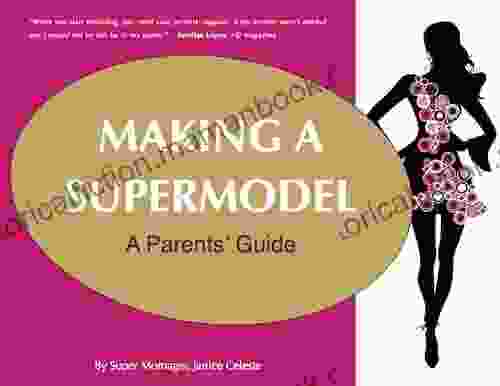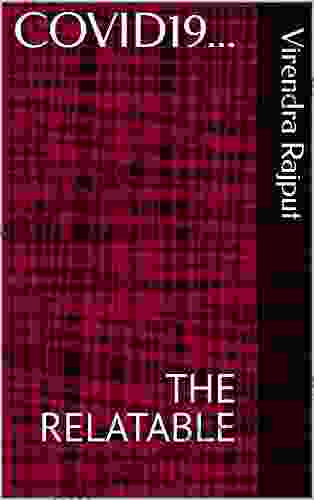How Bronze Age Riders From The Eurasian Steppes Shaped The Modern World: A Journey Through Time and Space

The vast and enigmatic Eurasian Steppes, stretching from the Black Sea to the Caspian Sea and beyond, have long been a cradle of human civilization. In the Bronze Age, around 3000 BCE, a remarkable group of people emerged from these grassy plains: the Bronze Age riders.
4.5 out of 5
| Language | : | English |
| File size | : | 24140 KB |
| Text-to-Speech | : | Enabled |
| Enhanced typesetting | : | Enabled |
| Print length | : | 814 pages |
| Screen Reader | : | Supported |
These skilled horsemen and warriors played a pivotal role in shaping the course of history. Their mastery of horse riding and chariot warfare gave them an edge in battle, enabling them to conquer vast territories and establish powerful empires.
Beyond their military prowess, the Bronze Age riders were also catalysts of cultural exchange and technological innovation. Their migrations and interactions with other societies left an enduring legacy on languages, art, agriculture, and trade.
The Origins and Expansion of the Bronze Age Riders
The origins of the Bronze Age riders are shrouded in mystery. Archaeological evidence suggests that they emerged from the Yamnaya culture, a Bronze Age society that flourished in the steppes around 3500 BCE.
The Yamnaya people were skilled metalworkers who developed advanced bronze weapons and tools. They also domesticated horses and developed the spoke-wheeled chariot, a revolutionary technology in warfare.
Around 2500 BCE, the Yamnaya people began to expand their territory. They migrated westward into Eastern Europe, south into Central Asia, and east into Siberia. Their migrations triggered a series of population displacements and cultural interactions that had a profound impact on the development of Eurasia.
Horse Riding and Chariot Warfare
The Bronze Age riders were renowned for their equestrian skills and the use of horse-drawn chariots in warfare. Horses gave them unprecedented mobility, allowing them to cover vast distances quickly and launch surprise attacks.
Chariots were particularly effective in battle. They were swift and maneuverable, and they could carry multiple warriors armed with spears and bows. The combined force of horse riding and chariot warfare made the Bronze Age riders a formidable military force.
Cultural Exchange and Technological Diffusion
As the Bronze Age riders migrated and conquered new territories, they encountered a diverse range of cultures. These interactions led to a vibrant exchange of ideas, technologies, and artistic styles.
The riders introduced the use of bronze metallurgy, horse riding, and chariot warfare to the regions they conquered. In turn, they adopted cultural elements from the local populations, such as new agricultural practices and artistic motifs.
This cultural diffusion had a profound impact on the development of civilizations across Eurasia. It contributed to the spread of Indo-European languages, the emergence of new political and social systems, and the development of new artistic traditions.
The Genetic Legacy of the Bronze Age Riders
The Bronze Age riders also left a significant genetic legacy on the modern world. Genetic studies have shown that they were closely related to the people of Central Asia and Siberia, and that their genes have been passed down to populations across Eurasia.
This genetic legacy suggests that the Bronze Age riders played a major role in shaping the genetic makeup of the modern world. Their migrations and conquests contributed to the mixing of populations and the spread of genetic diversity across Eurasia.
Art and Symbolism of the Bronze Age Riders
The Bronze Age riders were not only skilled warriors and innovators but also talented artists. They created a rich and distinctive art style that reflected their nomadic lifestyle and equestrian culture.
Much of their art was centered around horses and chariots. They depicted these subjects in rock carvings, pottery, and metalwork. Their art also featured abstract symbols, such as spirals and geometric designs, which may have had ritual or spiritual significance.
The art of the Bronze Age riders provides a fascinating glimpse into their beliefs, values, and cultural practices. It also reveals their deep connection to the horses and chariots that shaped their lives.
Agriculture and Trade
In addition to their military and cultural achievements, the Bronze Age riders also played an important role in the development of agriculture and trade.
They introduced new agricultural techniques to the regions they conquered, such as the use of irrigation and crop rotation. They also played a vital role in the trade of goods between East and West, establishing trade routes that stretched from China to Europe.
The Bronze Age riders were not only conquerors and innovators but also catalysts of economic and cultural exchange. Their trade activities helped to spread new technologies, ideas, and goods across the Eurasian continent.
Empires and Legacies
The Bronze Age riders established several powerful empires that dominated large parts of Eurasia. The most famous of these empires was the Scythian Empire, which flourished in Central Asia from the 7th to the 3rd centuries BCE.
The Scythians were skilled warriors and horsemen who controlled vast territories from the Black Sea to the Caspian Sea. They were also skilled artisans and traders, and their culture had a significant impact on the development of civilizations in Central Asia and Europe.
The Bronze Age riders left an enduring legacy that can still be seen today. Their military innovations, cultural exchanges, and economic activities shaped the development of civilizations across Eurasia and beyond.
The Bronze Age riders from the Eurasian Steppes were a remarkable group of people whose influence can still be felt today. Their mastery of horse riding and chariot warfare, their cultural exchanges, and their technological innovations played a pivotal role in shaping the modern world.
Through their migrations and interactions with other societies, the Bronze Age riders left an enduring legacy on languages, art, agriculture, trade, and empires. Their story is a testament to the power of human ingenuity, adaptability, and the interconnectedness of civilizations throughout history.
4.5 out of 5
| Language | : | English |
| File size | : | 24140 KB |
| Text-to-Speech | : | Enabled |
| Enhanced typesetting | : | Enabled |
| Print length | : | 814 pages |
| Screen Reader | : | Supported |
Do you want to contribute by writing guest posts on this blog?
Please contact us and send us a resume of previous articles that you have written.
 Top Book
Top Book Novel
Novel Fiction
Fiction Nonfiction
Nonfiction Literature
Literature Paperback
Paperback Hardcover
Hardcover E-book
E-book Audiobook
Audiobook Bestseller
Bestseller Classic
Classic Mystery
Mystery Thriller
Thriller Romance
Romance Fantasy
Fantasy Science Fiction
Science Fiction Biography
Biography Memoir
Memoir Autobiography
Autobiography Poetry
Poetry Drama
Drama Historical Fiction
Historical Fiction Self-help
Self-help Young Adult
Young Adult Childrens Books
Childrens Books Graphic Novel
Graphic Novel Anthology
Anthology Series
Series Encyclopedia
Encyclopedia Reference
Reference Guidebook
Guidebook Textbook
Textbook Workbook
Workbook Journal
Journal Diary
Diary Manuscript
Manuscript Folio
Folio Pulp Fiction
Pulp Fiction Short Stories
Short Stories Fairy Tales
Fairy Tales Fables
Fables Mythology
Mythology Philosophy
Philosophy Religion
Religion Spirituality
Spirituality Essays
Essays Critique
Critique Commentary
Commentary Glossary
Glossary Bibliography
Bibliography Index
Index Table of Contents
Table of Contents Preface
Preface Introduction
Introduction Foreword
Foreword Afterword
Afterword Appendices
Appendices Annotations
Annotations Footnotes
Footnotes Epilogue
Epilogue Prologue
Prologue Carolyn V Hamilton
Carolyn V Hamilton Aviya Kushner
Aviya Kushner Matsumocchan
Matsumocchan Vintage Visage
Vintage Visage Lara Temple
Lara Temple Amy Klein
Amy Klein William Wordsworth
William Wordsworth Harriet Beecher Stowe
Harriet Beecher Stowe David W Grigsby
David W Grigsby Vern Thiessen
Vern Thiessen K L Slater
K L Slater Ford Madox Ford
Ford Madox Ford Michael Abraham
Michael Abraham Kindle Edition
Kindle Edition Elaine Equi
Elaine Equi Heidi Bond
Heidi Bond Michelle Burford
Michelle Burford Jen Mcconnel
Jen Mcconnel Lisa Hughey
Lisa Hughey Ramon Henson
Ramon Henson
Light bulbAdvertise smarter! Our strategic ad space ensures maximum exposure. Reserve your spot today!

 Dennis HayesChristmas Hits Ukulele Play Along Songbook Volume 34: A Joyous Collection of...
Dennis HayesChristmas Hits Ukulele Play Along Songbook Volume 34: A Joyous Collection of...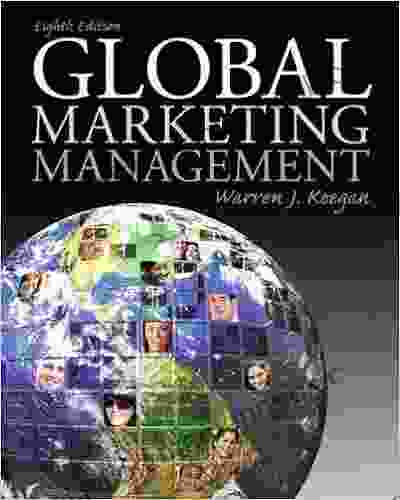
 Edward BellGlobal Marketing Management: A Comprehensive Guide Based on Warren Keegan's...
Edward BellGlobal Marketing Management: A Comprehensive Guide Based on Warren Keegan's... Darius CoxFollow ·4.4k
Darius CoxFollow ·4.4k Italo CalvinoFollow ·6.3k
Italo CalvinoFollow ·6.3k Francisco CoxFollow ·5.7k
Francisco CoxFollow ·5.7k Mario BenedettiFollow ·6.1k
Mario BenedettiFollow ·6.1k Earl WilliamsFollow ·13.6k
Earl WilliamsFollow ·13.6k Pat MitchellFollow ·3.9k
Pat MitchellFollow ·3.9k VoltaireFollow ·5.7k
VoltaireFollow ·5.7k Ethan GrayFollow ·8.8k
Ethan GrayFollow ·8.8k

 Allen Ginsberg
Allen GinsbergUnlocking Financial Peace with Low Risk Investing: A...
In the world of investing, it is often said...
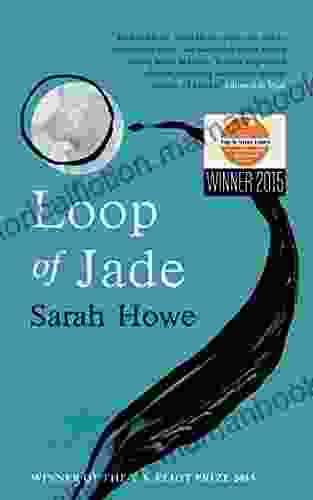
 Eddie Powell
Eddie PowellLoop of Jade: An Exploration of Grief, Memory, and the...
Sarah Howe's...
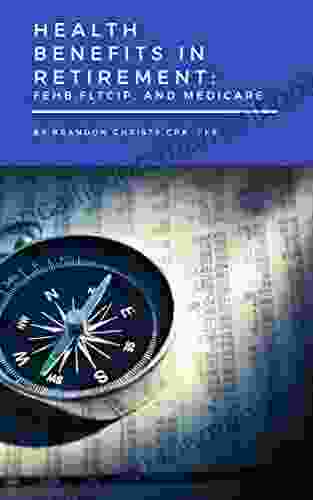
 Zachary Cox
Zachary CoxHealth Benefits in Retirement: Navigating the Maze of...
Retirement...
4.5 out of 5
| Language | : | English |
| File size | : | 24140 KB |
| Text-to-Speech | : | Enabled |
| Enhanced typesetting | : | Enabled |
| Print length | : | 814 pages |
| Screen Reader | : | Supported |







